In the arid heart of Maiduguri, Borno State, Nigeria, stands a monument to opulence so extraordinary that it defies belief. Known as Deribe Palace—or more reverently, the “Gold House”—this architectural marvel was the brainchild of Alhaji Ahmed Mai Deribe, a man whose wealth and ambition transformed a barren landscape into a glittering oasis.
But what compels a man to build a palace from liquid gold? What drives him to host royalty and heads of state, yet remain a shadow in the annals of Nigerian history? This is the story of a man who turned his dreams into gold—and whose legacy continues to shimmer in the sands of time.
The Man Behind the Gold

Alhaji Ahmed Mai Deribe was born in 1924 into the Deribe family of Borno State. His rise from humble beginnings to becoming one of Nigeria’s wealthiest men in the 1980s is a testament to his business acumen and relentless drive. While details about his early life remain scarce, his impact on the Nigerian business landscape is undeniable.
In the 1980s, Deribe was at the pinnacle of his wealth. He was the chairman of Cavendish Petroleum, an oil company that held significant oil blocks in Nigeria. His business ventures extended beyond oil, encompassing various industries that solidified his status as a business magnate. His influence was not confined to Nigeria; he was recognized internationally, with notable figures such as Princess Diana and Prince Charles visiting his residence .
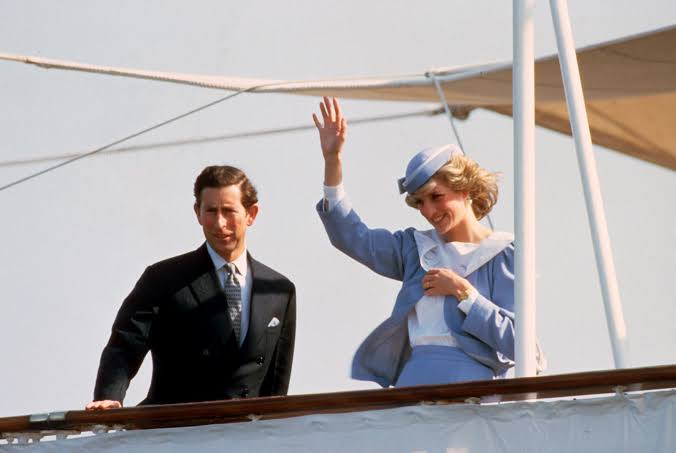
The Genesis of Deribe Palace
The construction of Deribe Palace commenced in the early 1980s and spanned a decade, culminating in what is often described as the most expensive residence in West Africa at the time. The palace’s design is a fusion of Arabic, Italian, and Northern Nigerian architectural styles, reflecting Deribe’s diverse influences and aspirations .
One of the most striking features of the palace is its use of gold. While the claim that the house was built using a mixture of liquid gold is often cited, the exact composition of the materials remains a subject of speculation. Regardless, the palace’s opulence is evident in its gilded interiors, intricate calligraphy, and coffered ceilings. The furniture and utensils were custom-made by the Italian company Giovanni Monzio Compagnoni, adding to the residence’s exclusivity .
A Glimpse into the Palace
Deribe Palace is not just a residence; it’s a statement of wealth and grandeur. The expansive grounds feature numerous rooms, halls, and courtyards, making it challenging to ascertain the exact number of rooms. The sheer scale and design of the palace are awe-inspiring, with car parking spaces scattered throughout the estate, resembling a car mart in the mornings .
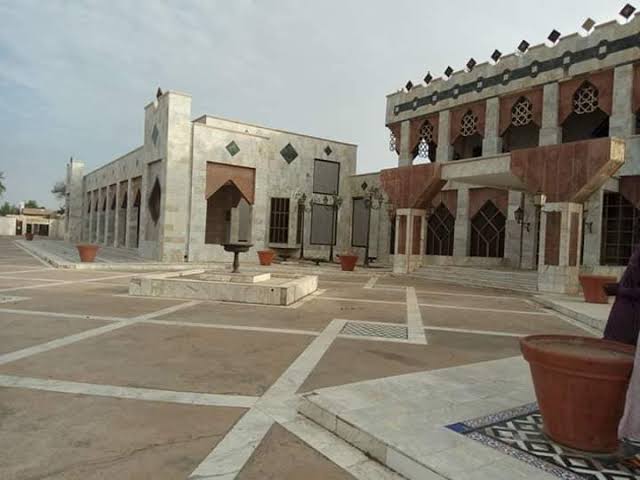
The main entrance is fortified with bulletproof materials, underscoring the importance and security of the residence. The palace’s grandeur attracted dignitaries from around the world, including King Juan Carlos I of Spain, who visited in 1986 and was reportedly amazed by the opulence amidst the vast desert landscape .
A House of Many Rooms
Deribe Palace reportedly contained five apartments for his wives, each with four bedrooms, private sitting rooms, and exclusive courtyards. Multiple reception halls, banquet rooms, prayer rooms, and recreational areas dotted the complex.
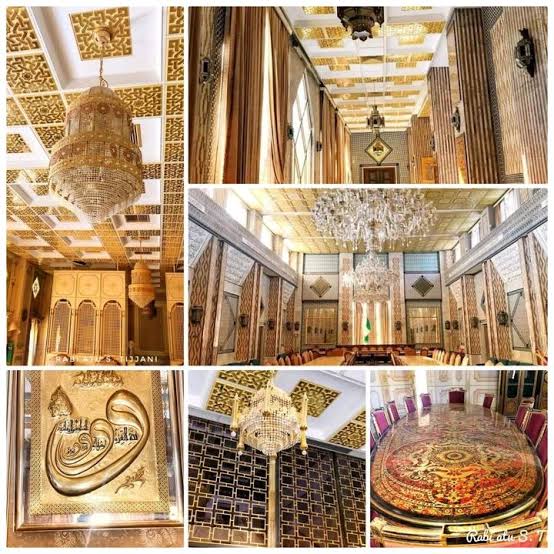
Car parking alone was an enormous operation: mornings often resembled miniature motor shows, a testament to the family’s influence and the scale of visitors they received.
Life Inside the Palace
Life inside the palace was a mix of spectacle and routine. Guests recounted receiving lavish welcomes—ornate dining tables, live music, and exotic menus. Security was uncompromising; bulletproof gates, armed guards, and surveillance ensured the palace was a fortress.
But for the family, it was home. Daily routines intertwined with grandiosity: children playing among columns of marble, wives managing personal wings, and staff coordinating every detail. Festivals and religious celebrations, particularly Ramadan, were community spectacles, with Deribe personally distributing food and donations to locals.
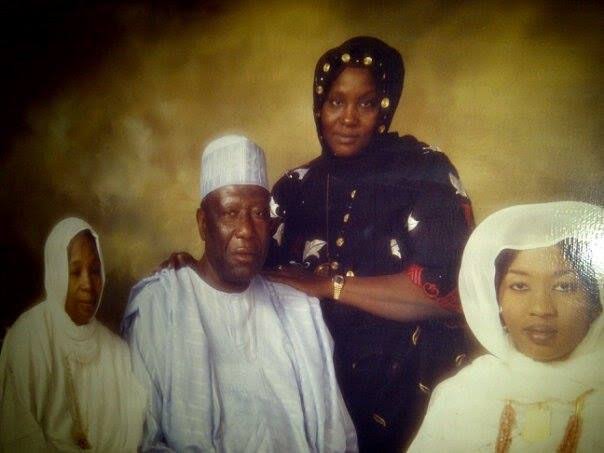
Controversies and Whispers of Wealth
No story of extraordinary wealth in Nigeria would be complete without controversies. Questions swirled around how Deribe amassed his fortune, the sources of some oil contracts, and the opacity of his business dealings. Journalists occasionally reported alleged conflicts of interest, though the man remained largely untouchable, insulated by wealth, political ties, and strategic philanthropy.
Deribe’s generosity also created tension. While he funded mosques, educational projects, and community aid across Borno State, rival businessmen questioned the sustainability and transparency of his giving. Did this lavish philanthropy mask other interests, or was it genuine? Such questions lingered even after his death.
International Fascination
The palace drew international attention. King Juan Carlos I of Spain visited in 1986, expressed amazement at a golden palace in the Sahara-like environment of Maiduguri. Princess Diana reportedly admired its intricate interiors. For many foreign visitors, it was a surreal contrast: a desert landscape punctuated by a gleaming symbol of Nigerian ambition and enterprise.
These visits elevated Deribe from a national figure to a curiosity on the global stage, a man who blended entrepreneurship with performance art—where wealth itself became the spectacle.
The Price of Opulence
The cost of building and maintaining Deribe Palace was staggering. Estimates place construction at $100 million, with monthly upkeep in the millions of naira. Staff numbers, security, imported goods, and custom fixtures contributed to an expense unparalleled in West Africa at the time. Yet, the palace was more than just a home—it was a legacy in bricks, mortar, and gold.
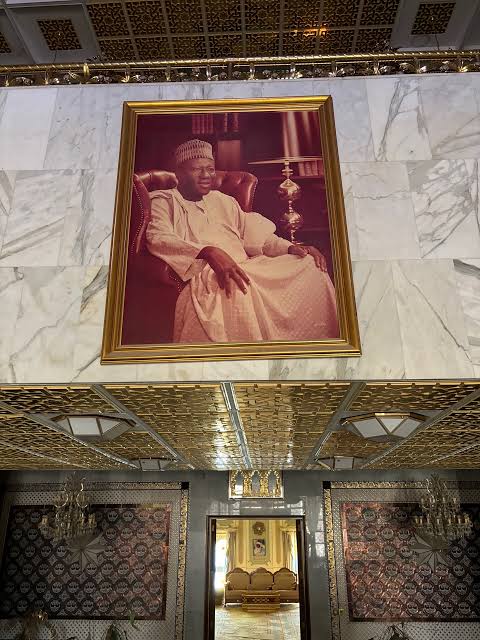
Maintenance challenges grew over the years, particularly after his passing. Yet, the palace remained a source of fascination: journalists, photographers, and urban explorers often sought access to its corridors and halls, documenting a grandeur frozen in time.
Legacy and Philanthropy
Alhaji Mai Deribe’s influence extended beyond architecture. He commissioned the Deribe Central Mosque and donated generously to the Maiduguri Central Mosque. During Ramadan, he distributed thousands of millet allocations to communities and funded the construction of 78 mosques across Northern Nigeria.
Philanthropy was both personal and public. While it enhanced his reputation, it also cemented his social and cultural impact—a legacy intertwined with faith, generosity, and local identity.
Death and Enduring Mystique
Alhaji Mai Deribe died in 2002 in Mecca, Saudi Arabia. His passing closed a chapter on one of Nigeria’s most extravagant lives. Yet the palace remains, largely unoccupied, a monument to ambition, vision, and excess.
Deribe’s story continues to inspire debate. Scholars, historians, and architects analyze the palace as both a cultural artifact and a symbol of the heights Nigeria’s entrepreneurs could achieve. Some see it as a cautionary tale; others, as a dream realized against all odds.
The Palace Today
Today, Deribe Palace stands as both relic and legend. Though largely silent, its halls tell stories of ambition, wealth, and vision. You can almost hear the echoes of formal banquets, the shuffle of staff, and the laughter of children playing among golden columns.
Urban explorers and documentary filmmakers increasingly visit the site, capturing images of ornate marble, gilded walls, and Italian furniture. Social media has reignited interest, with short clips going viral and sparking debates about wealth, legacy, and Nigerian history.
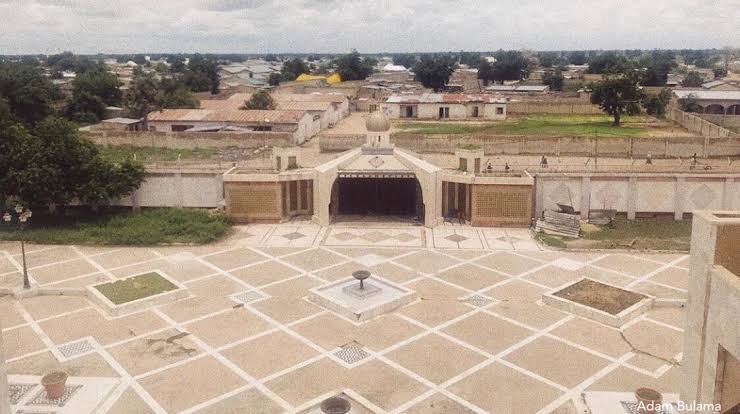
Lessons from a Golden Legacy
Deribe Palace offers a lens into Nigeria’s complex relationship with wealth, ambition, and visibility. Alhaji Mai Deribe’s life reminds us that wealth can create beauty, but also controversy; it can attract admiration, yet breed questions.
His story is a meditation on human desire: the urge to leave behind something tangible, something monumental. In the sands of Maiduguri, Deribe’s palace still gleams—a symbol of a life lived large, of dreams cast in gold, and of a legacy that refuses to fade.














